Switzerland
Benedictine Convent of St. John
The Benedictine Convent of St. John at Müstair is an ancient monastery with an exceptionally well-preserved heritage of Carolingian art.
The murals depicting scenes from the Old and New Testament date from around 800 CE, and were uncovered during 20th century restoration works. Along with it were some Romanesque frescoes from the 1160s. The abbey was located along the Val Müstair pass over the Alps from Italy and was fortified to allow it to control the pass.
Community Perspective: People enjoy “the beautiful sweep and tranquility of the valley and the perfection, beauty and clarity of the frescoes in this intimate church”.
Site Info
Official Information
- Full Name
- Benedictine Convent of St. John at Müstair (ID: 269)
- Country
- Switzerland
- Status
-
Inscribed 1983
Site history
History of Benedictine Convent of St. John
- 1983: Inscribed
- Inscribed
- Type
- Cultural
- Criteria
- iii
Links
- UNESCO
- whc.unesco.org
- Official
-
- muestair.ch — Convent
All Links
UNESCO.org
- whc.unesco.org — whc.unesco.org/
Official Website
- muestair.ch — Convent
Community Information
- Community Category
- Religious structure: Christian
Travel Information
Free entrance
Recent Connections
-
Perfect Inscriptions
1983 -
Double chapel
St. Ulrich und St. Nikolaus -
Charlemagne
...was founded around 775, probably on …
Connections of Benedictine Convent of St. John
- Individual People
-
-
Charlemagne
...was founded around 775, probably on the orders of Charlemagne. (AB Ev.)
-
- Geography
- Trivia
-
-
Role of Women
Nunnery
-
- History
-
-
Carolingian Empire
-
Thirty Years' War
Im Dreißigjährigen Krieg wiederholen sich schicksalhaft Besetzung und Plünderungen. Die Klosterbücher verzeichnen den herben Verlust von vier Zentnern Zinn, Silber, elf Zentnern Schmalz, 33 Stück Großvieh. (Schätze der Welt)
-
- Architecture
-
-
Pre-Romanesque
well-preserved heritage of Carolingian art > the Carolingian era is part of the period in Medieval art sometimes called the "Pre-Romanesque". (wiki) -
Double chapel
St. Ulrich und St. Nikolaus -
Sgraffito
Die Doppelkapelle St. Ulrich und St. Nikolaus fällt durch ihre frühbarocke Ausstattung einer Sgraffitobordüren ... auf. (wiki de)
-
- World Heritage Process
-
-
Perfect Inscriptions
1983 -
Inscribed on a single criterion only
iii. to bear a unique or at least exceptional testimony to a cultural tradition or to a civilization which is living or which has disappeared
-
- Religion and Belief
-
-
Legends and Folk Myths
Charlemagne is said to have founded the monastery because he survived a snow storm here -
Nunneries
Still an active nunnery -
Benedictines
-
- Constructions
-
-
Tower-houses
the oldest towerhouse in the Alps (from the 10th century)
-
- Timeline
-
-
Built in the 9th century
murals painted c. A.D. 800 + noted from the beginning of the 9th century as being an establishment of Benedictines
-
- Visiting conditions
-
-
Free entrance
Entrance to the church (the main part for its OUV) is free
-
News
No news.
Recent Visitors
Visitors of Benedictine Convent of St. John
- Adrian Turtschi
- Alexander Barabanov
- Alexander Lehmann
- A. Mehmet Haksever
- Argo
- Aspasia
- Atila Ege
- BaziFettehenne
- Bin
- Can SARICA
- Caspar
- Cezar Grozavu
- chenqtao
- Cheryl
- Christian Wagner
- christof
- Christoph
- Christravelblog
- Claire Bradshaw
- ClaraHH
- Clyde
- Cristina Erba
- cwthong
- Daniel Chazad
- Daniel Gabi
- Dan Pettigrew
- David Aaronson
- David Berlanda
- Deffra
- Dimitar Krastev
- Dirk-pieter
- Els Slots
- fabi-ddorf
- Fan Yibo
- Farinelli
- Feldhase
- Flexiear
- Frederik Dawson
- Gary Arndt
- Geert Luiken
- George Gdanski
- GeorgeIng61
- GerhardM
- Harald T.
- Harry Mitsidis
- Hdhuntphotography
- hivander385
- Hubert
- Iain Jackson
- ih0000
- Ivan Rucek
- Jarek Pokrzywnicki
- Jasam
- Jean Lecaillon
- Jeffrey Chai
- Jezza
- Joel on the Road
- Jonas Kremer
- Jonas Martinsson
- JoStof
- Joyce van Soest
- KarenBMoore
- Karito Vies
- Kbecq
- Klaus Freisinger
- Lara Adler
- Loic Pedras
- Lucas Del Puppo
- Lucio
- Luis Filipe Gaspar
- lynnz317@aol.com
- Maciej Gil
- Mahuhe
- marcel staron
- Martina Rúčková
- Marty
- Matthewsharris
- MaYumin
- Mikko
- Milan Jirasek
- MMM
- MoPython
- nan
- Nasebaer
- Nihal Ege
- PabloNorte
- Paola Laura
- Patrik
- Patrik_globe
- Paul Schofield
- Philipp Leu
- Philipp Peterer
- Piotr Wasil
- qwertzlbry
- Randi Thomsen
- Roger Ourset
- Roman Bruehwiler
- Roman Raab
- Sergio Arjona
- Shandos Cleaver
- SirLoydd
- Solivagant
- Stijn
- Svein Elias
- Szucs Tamas
- Taotao Chen
- Tarquinio_Superbo
- Tatiana Nikulnikova
- Thomas Buechler
- Thomas van der Walt
- Traveling Girl
- Tschibi
- Tsunami
- Vanessa Buechler
- VLabhard
- Walter
- Wimmy
- Wojciech Fedoruk
- Yevhen Ivanovych
- Zoë Sheng
Community Reviews
Show full reviews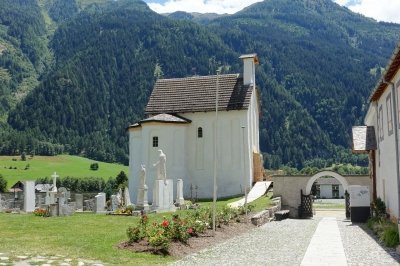
Tucked away in a rather remote valley in the Swiss Alps just next to the Italian border you find the Convent of St John. Founded in Carolingian times on a major trade route across the Alps it still serves as a nunnery to this day. It's primary draw are the colorful Carolingian and Romanesque murals.
At the time of my visit (Summer 2018) both the main altar as well as the next door chapel were under renovation. The site itself isn't large and with plenty of it covered in scaffolds I wasn't able to fully appreciate it.
And as fascinating as I find all things Carolingian I have to admit that most of the Carolingian sites (including Müstäir) are rather simple and small in scope. The single exception is Aachen Cathedral which is in a league of its own when it comes to Carolingian sites.
Your Visit
Visiting the abbey is free. There is an attached museum which charges entry, but it's a rather simple offering, so you may want to skip it. There are also regular tours. But I would have had to wait at least an hour and decided against joining.
One practical hint: The abbey is really dark on the inside. I had a hard time making out all the murals solely relying on natural light. There are light switches, though, when you enter that will illuminate the murals.
Getting There
It's a close to 4h trip from Zürich to …
Keep reading 0 comments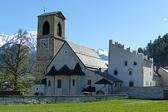
I visited this WHS in May 2014. It's just a few minutes from the border with Italy. The museum and church are open till 17:00. I enjoyed the well preserved frescoes in the church but the highlight of my visit was walking in the cemetery near the church enjoying some peace and quiet while taking in the surrounding mountain scenery.
Keep reading 0 comments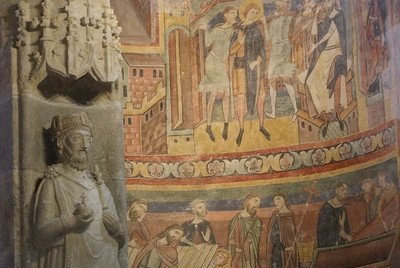
A day trip to Müstair is absolutely recommended to anyone staying in the center or southeast of Switzerland. The drive out there, across the Flüela Pass and through the Swiss National Park, is very scenic. I just had to stop my rental car a couple of times to take pictures of the natural surroundings. There are several picturesque villages too, and hiking paths. I combined the visit of this WHS with one to the Albula Railway on the same day – in hindsight it would have been better to divide this over 2 days, so as to enjoy both sites more.
The Convent is easy to find in Müstair: it’s the prominent building complex at the far end of town, white and light grey in colour. In the morning it’s only open between 10 and 12. There were quite a lot of visitors already present when I arrived at 10.45. Numerous Italians among them, as this is close to the border with Italy. I was a bit confused about where to start my tour – I had read the reviews below and did not want to end up at the museum/convent while the church is the most impressive part.
However, there’s another sight directly at the entrance: the double chapel, housed in a small white building. This also has mural paintings from the Carolingian and romanesque periods. The interior is being renovated at the moment, and it can take years for it to be finished. While a guided …
Keep reading 0 comments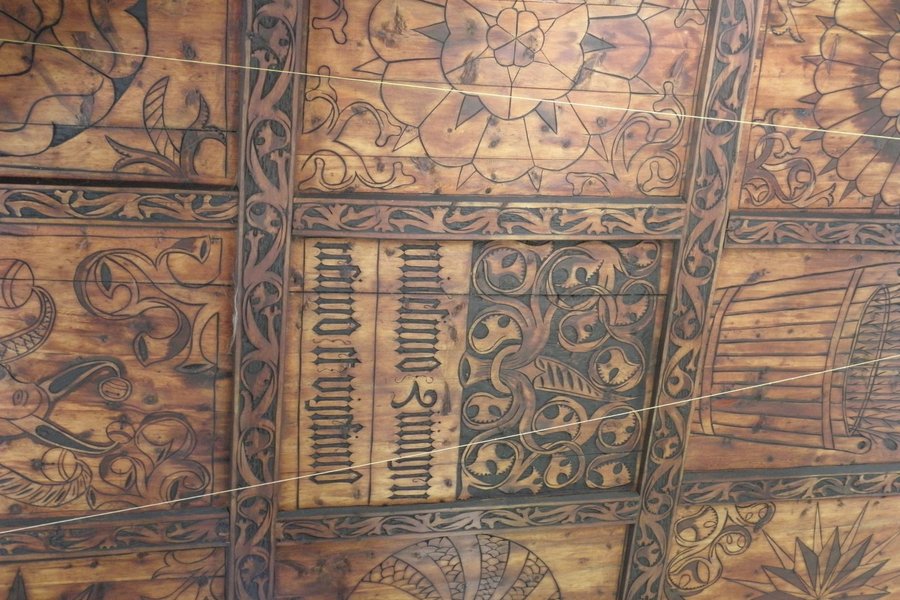
Müstair is a small village in the Romansh-speaking part of Switzerland, just 1 km from the Italian border. The main (well, only) attraction is the impressive Convent of St. John, which consists of a small church and the main building, which is still an active monastery with a handful of nuns. The church itself can be visited free of charge. Only the convent itself, which includes a reasonably interesting exhibition, charges for admission. The medieval frescoes are very big and really beautiful, and certainly merit its inclusion on the WH list, since there are very few remains from this period, and even fewer in such a good condition. The historic value and scenic setting in a beautiful mountain landscape make this a worthwhile trip, even though Müstair is a bit out of the way. It can actually be quite easily reached by public transport from Zernez in Switzerland (passing through the scenic Swiss National Park) and from Mals in Italy (and from there over the Reschen Pass to Austria).
Keep reading 0 comments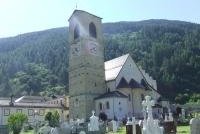
The highlight of this WHS is the brightly coloured expanse of frescoes inside the church. But almost as interesting was a visit to nearby Mustair village, located deep in the Romansch-speaking region of Switzerland. I reached Mustair by postbus from Zernez station, passing through the scenic Swiss National Park en route. The bus continues from Mustair to Malles station (Italy), another point of access.
Keep reading 0 comments
Above, David Berlanda has written an excellent overview of this marvelous site. I went in Feb. 2008 by Swiss rail to Scoul where I stayed overnight at the excellent hostel next to the train station followed the next day by post bus to the Val Mustair. While I had only a few hours at St. John's Convent it remains one of my most treasured memories for the beautiful sweep and tranquility of the valley and the perfection, beauty and clarity of the frescoes in this intimate church. The religious architecture and art mesh in a pleasingly direct manner. There is a smaller chapel in front of the church where there may be more frescoes yet to be uncovered as I was told by a photographer working with an infrared camera.
I was told that the Benedictine hours have been continuously kept for over 1000 years first by monks, now by nuns and that the present order has invited younger sisters from the Philippines to join them. Some distance above the convent I've been told there is a lake possibly to hike to. I have Brother Antoine Galliker (deceased Jan. 2010)of the Abbaye de Fontaine-Andre in Neuchatel for encouraging me to visit The Convent of St. John at Mustair.
Keep reading 0 comments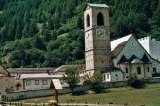
I have been once to the female Benedictine convent in Müstair, situated in a small village in a valley of the Canton of the Grisons. It was found by the bishop of Chur at the behest of Charlemagne in the 9th century and it’s a beautiful example of the Christian monastic renovation of that period. It has two courts and it’s closed by walls. The Carolingian church, in part reconstructed in Gothic and Baroque styles, has a high tower, that was the house of the abbess. Inside were discovered, with the removal of the Gothic ceiling and of the whithewash, the greatest complex of frescoes, Carolingian and Romanesque, in Switzerland (with scenes from the Old and the New Testament painted with ochre, red, and brown colours),a statue of Charlemagne, a nice relief, an interesting altar, a women's gallery and three arcaded apsis. Near the church are the chapels of St. Ulrich and Nicolas, with Carolingian relieves, and of Holy Cross. There are also the rooms of the convent with original furniture, frescos and stucco (like in the residence of the bishop Norbert).
I was a little bit disappointed by the conventual buildings, but I liked very much the frescos inside. It justifies the inscription because it contains the most important Swiss frescos, that are also between the most important Carolingian frescos. The buildings are in a very good state of conservation and also the frescos. However there are some parts of the Carolingian frescos in the church that aren't conservated …
Keep reading 0 comments
